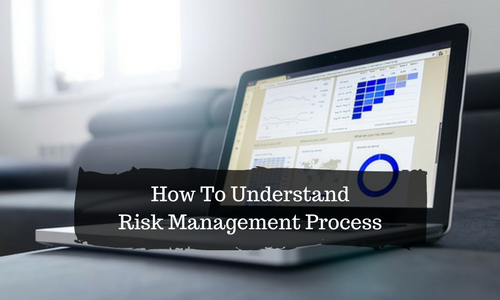Risk and Risk Management Process
A risk is a potential problem that has not yet occurred. A problem that has already occurred is called by another name and that is an “issue” and it is treated differently in project management software. It includes identification, prioritization, and treatment of risks faced by the business. Risk management is performed at various levels like project level, program level, organization level, industry level and even national and international level. Risk arises from over a variety of perspectives like project failure, safety, security, legal liabilities and so on. So let us let head to risk management process and understand the risk management process.
Risk Management Process
Risk Identification
Risks are identified within the scope of the project. The next step in the risk management process is risk prioritization and the last step in the risk management process is risk treatment. In risk identification, risks are identified within the scope of the project. Risks can be identified using a number of resources like project objectives, risk list of previous projects etc. For example, if certain areas of the system are unstable and those areas are being further developed in the current project, it should be treated as a risk.
Risk Prioritization
It is simple to prioritize a risk if the risk is understood correctly and there are two things that need to be prioritized are the risk impact and the risk probability. So, you can give a rating of low, medium or high respectively to each one and multiply all of them to give you the risk index for every particular risk. When you add up the risk indices of each risk, then you get the overall risk index of the project, which indicates the project in executing and understanding how risky or not the project is.
Risk Treatment
Risk Avoidance
Suppose, if there is a risk related to a new component, it is possible to postpone this development to a new release. This is a slightly uncommon risk treatment. It is the elimination of some kind of hazardous activities and exposures that can have an adverse effect on organization’s property.
Risk Transfer
If the risk compromises of the system security, it is possible to hire a specialized company to perform the security testing and system hardening. Then, the risk is transferred to the other company.
Risk Mitigation
It is a common risk treatment. The objective of risk mitigation is to reduce the risk impact or risk probability or both. Like if the project team is new, it will not have enough knowledge of the large system. The risk mitigation treatment may be to have knowledgeable team member join the team and train other people on the fly.
Risk Acceptance
Any type of risk that is not treated by any of these treatments has to be accepted. This happens when there is no viable mitigation available due to reasons such as cost or unavailability of risk mitigation.
Here are a few articles for you to read next
How TIEMCHART is changing the way project has traditionally been monitored
Why TIEMCHART is the best Microsoft Project Alternative solution
Tiemchart is powered by Insiet BI Analytics. They are growing popularity around M&A and Intercompany:
Merger and Acquisition solution from Insiet © https://insiet.com/merger-acquisition-ma-system-integration/
Intercompany Reconciliation Solution from Insiet © https://insiet.com/solution/intercompany-reconciliation/






